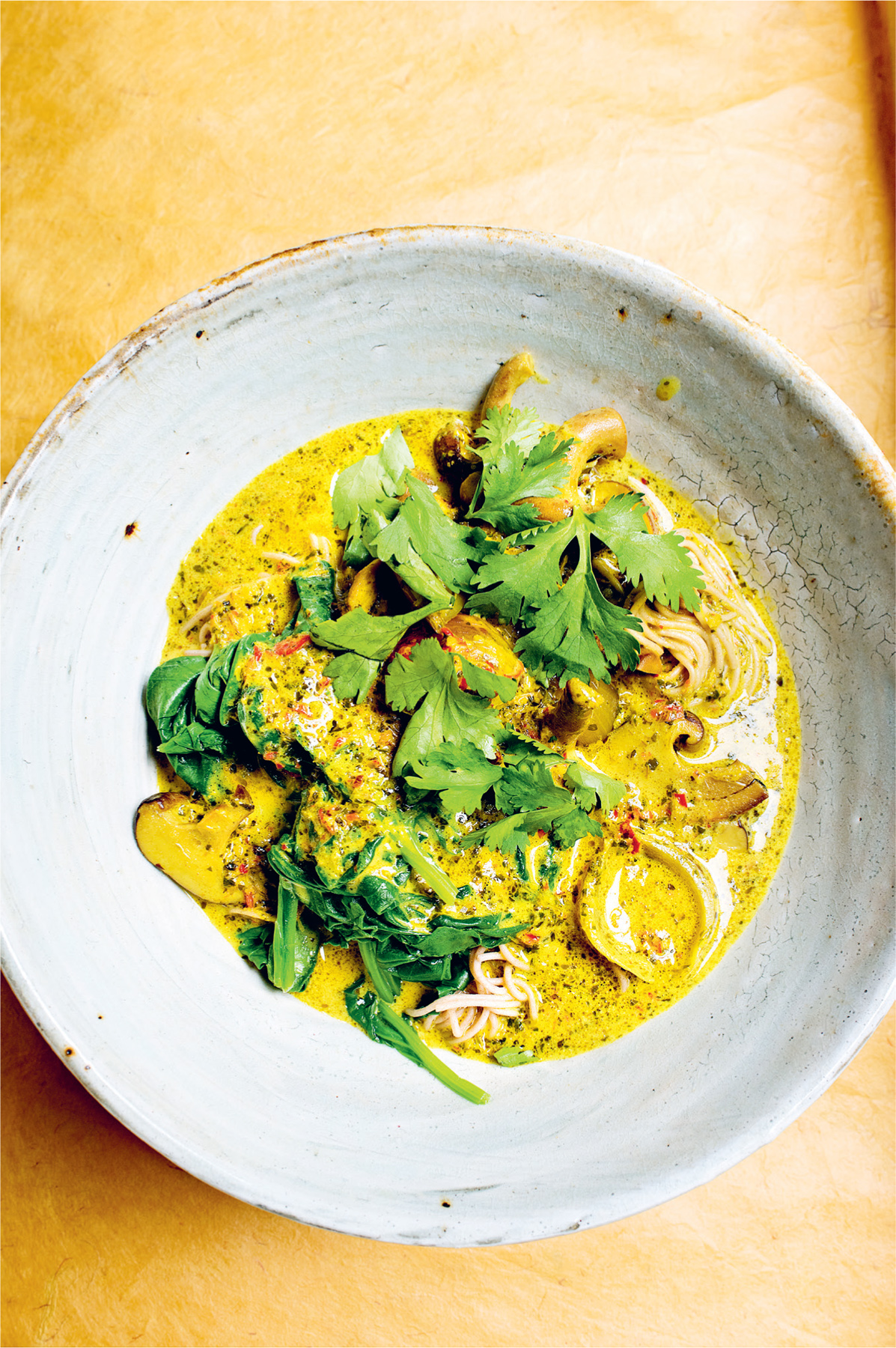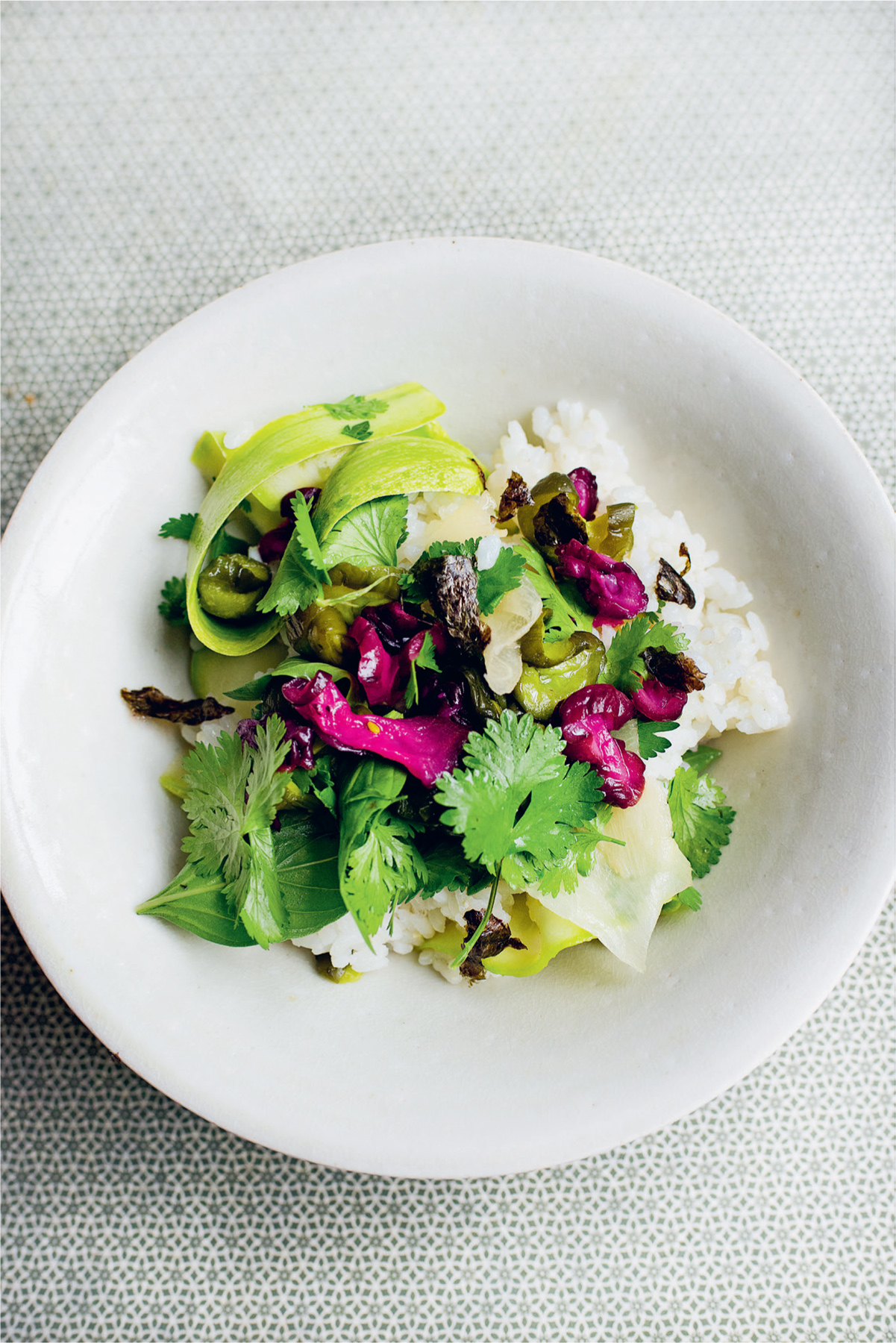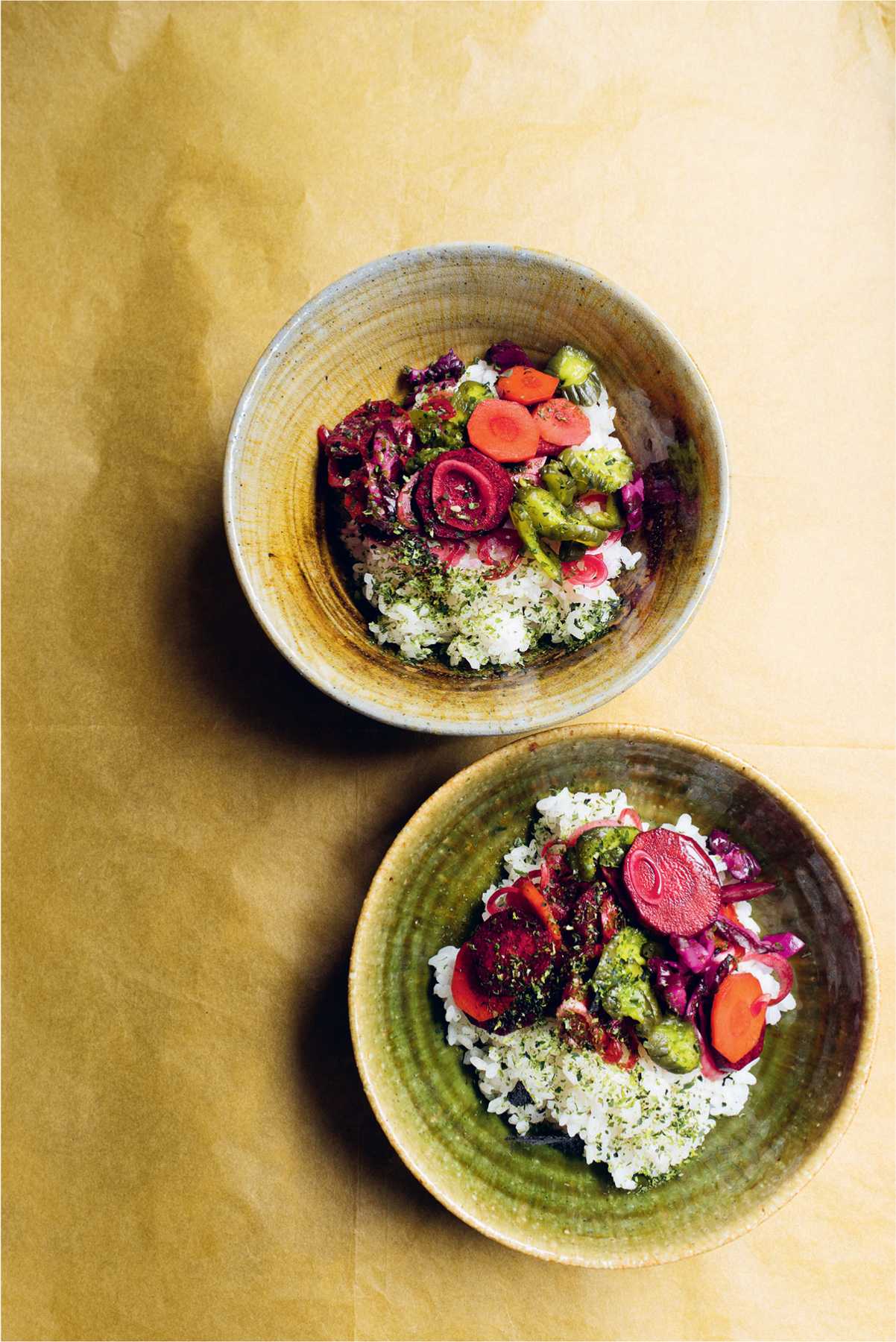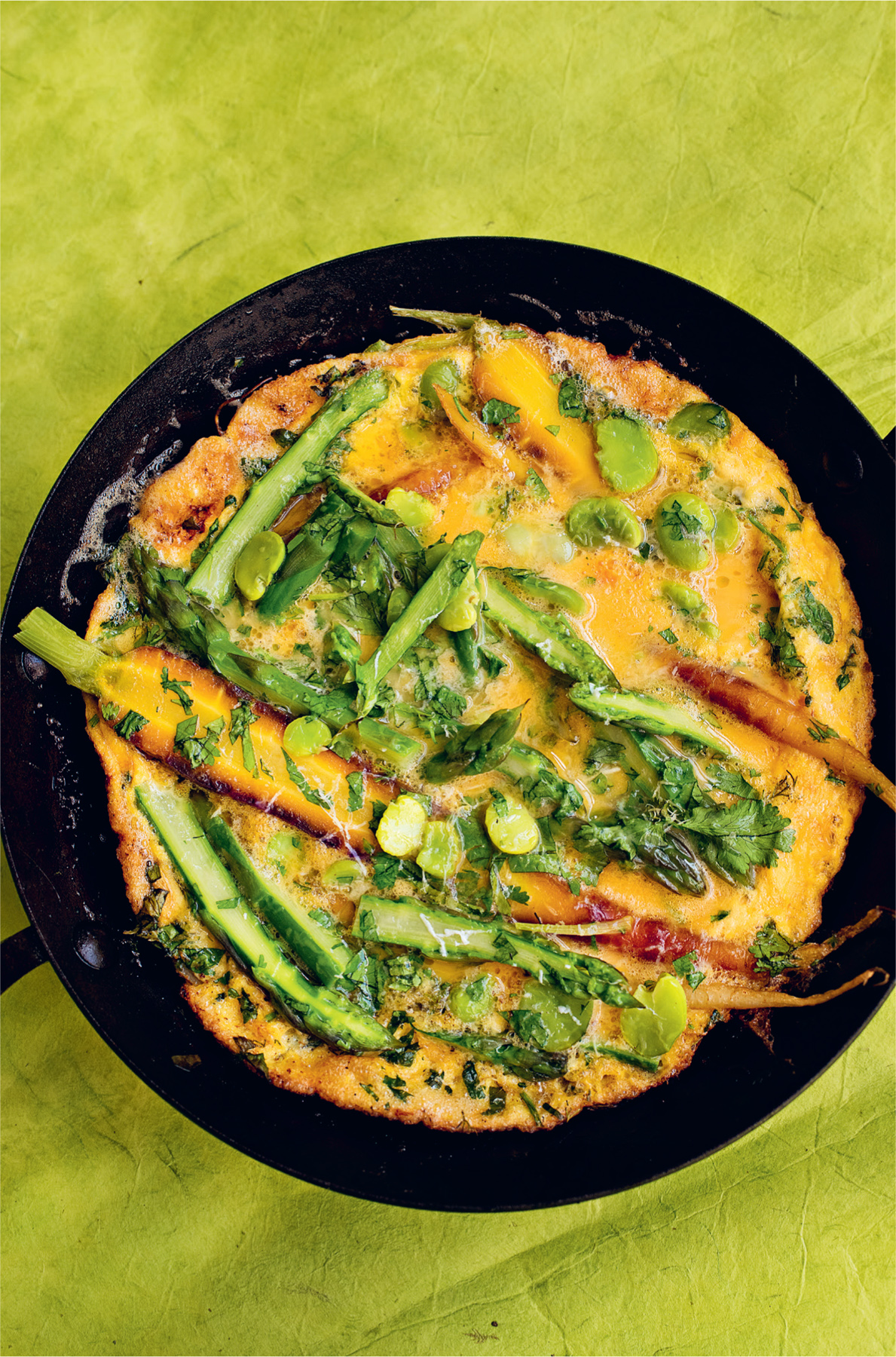
Полная версия
GreenFeast
RUNNER BEANS, CASHEWS, TOMATOES
Crisp, crunchy, refreshing.
Serves 2
runner beans 350g
garlic 2 large cloves
guindilla chillies 3
olive oil 4 tablespoons
cashews 100g
cherry tomatoes 300g
spring onions 3
Put a deep pan of water on to boil. Remove any strings from the edges of the runner beans, then cut the beans into short, thick slices. When the water is boiling, salt it lightly and tip in the beans. Let them cook for two minutes, then drain and plunge them into deep, iced water.
Peel and thinly slice the garlic, chop the chillies, then sauté both briefly in the olive oil. Remove and set aside, then return the pan to the heat, add the cashews and let them turn a light golden brown. Remove from the oil and salt generously.
Quarter the tomatoes and chop the spring onions, then toss them with the drained runner beans, garlic, chillies, cashews and a grinding of black pepper.
• A nutty salad for serving alongside other dishes.

SHIITAKE, COCONUT, SOBA NOODLES
Deeply aromatic. Vibrant. Heart-warming.
Serves 2
For the spice paste:
red chillies, small, hot 3
garlic 3 cloves
ginger a 30g lump
lemon grass 3 stalks
coriander seeds 1 teaspoon
coriander leaves a handful
ground turmeric 1 teaspoon
vegetable oil a little
shallots, medium 6
shiitake mushrooms 150g
vegetable stock 500ml
spinach 150g
soba noodles 200g
coconut milk 400ml
coriander leaves, to finish a handful
Blend the chillies, garlic, peeled ginger, lemon grass, coriander seeds and leaves, turmeric and a little vegetable oil to a paste in a food processor.
Peel and halve the shallots and halve the shiitake. Warm the spice paste in a wok or frying pan over a moderate heat, then add the shallots and mushrooms. Let everything sizzle for a minute or two, then pour in the stock, bring to the boil, lower the heat and simmer for fifteen minutes.
Wash the spinach and whilst the leaves are wet, cook lightly in a pan with a lid. When they have relaxed, remove to a bowl of iced water to stop them cooking any further. Squeeze almost dry and roughly chop.
Put the noodles into a heatproof bowl, pour over boiling water from the kettle and push the noodles down into the water. Leave for five minutes, then drain. Add the coconut milk to the mushrooms, simmer for five minutes, then add the spinach and noodles. Finish with a little fresh coriander.

RICE, COURGETTES, PICKLED VEGETABLES
Quietly pleasing. Frugal.
Serves 2
sushi rice 180g
small courgettes 150g
sesame oil 1 tablespoon
Japanese pickled radish, pumpkin, etc. 75g
pickled ginger 20g
basil leaves a handful
coriander leaves a handful
dried seaweed flakes 2 tablespoons
rice vinegar 1 tablespoon
Wash the sushi rice in a bowl of warm water, pour off the water and repeat. Tip the rice into a medium-sized saucepan, pour in 300ml of water and bring to the boil. Lower the heat so the water is simmering, add half a teaspoon of salt, then cover with a lid and leave to cook for fifteen minutes.
Trim the courgettes, then, using a vegetable peeler, remove slices in long, thin shavings. Toss the slices in the sesame oil and season lightly with salt. Roughly chop the Japanese pickled vegetables. Shred the pickled ginger. Roughly chop the basil and coriander leaves.
When the rice is cooked, remove the pan from the heat and leave to rest for five minutes, still covered by its lid. Remove the lid and fold the raw courgettes, chopped pickles and ginger, basil and coriander into the rice with a fork. Stir in the dried seaweed flakes and rice vinegar and season to taste.
• If some rice has stuck to the bottom of the pan during cooking, empty out the rest of the rice, then pour a little water into the pan, bring to the boil and leave it for a minute or two. The rice will be easy to remove.
• The shavings of courgettes soften in the residual heat of the cooked rice. You could stir in a few other good ingredients instead. Chopped tomatoes that you have marinated briefly in olive oil and basil. French beans, lightly cooked and cut into short lengths or, better still, thin batons of cucumber tossed with a little rice wine vinegar and a few nigella seeds.

RICE, PICKLES, NORI
A bowl of steaming rice. The snap of crisp pickles.
Serves 2
carrots 2, large
a banana shallot, medium-sized
mirin 2 tablespoons
rice vinegar 6 tablespoons
tamari soy sauce 1 tablespoon
sushi rice 190g
dried nori flakes 2 teaspoons
tsukemono (pickled vegetables) 6 teaspoons
Scrub the carrots and slice them into rounds no thicker than a pound coin. Put them into a sealable freezer bag. Peel the shallot, slice thinly, then add to the carrots. Pour the mirin, rice vinegar and soy into the bag and seal it tightly, then refrigerate for at least thirty minutes, though it will keep in good condition for several days.
Wash the rice in warm water, drain, then put it in a small, deep pan, cover with 300ml of cold water and soak for thirty minutes. Bring to the boil, lightly salt, then cover the pot tightly with a lid and simmer for ten minutes. Remove from the heat and leave to rest for another ten minutes, then lift the lid and run a fork through the grains. It will be fluffy and sticky.
Divide the rice between two deep bowls, then sprinkle with the nori flakes and spoon over some of the crisp pickles, the tsukemono and their juice.

I cook many a meal in a shallow pan over a low flame. I put a low-sided pan on the hob, pour in a little olive oil, warm it until its surface shimmers, then lower in vegetables – asparagus, green beans, mushrooms, fennel or summer squash – followed by a generous splash of water, a trio of bay leaves, half a dozen black peppercorns and a clove or two of young mauve-skinned garlic. The vegetables then cook over a low to moderate heat, partially covered by a lid, till fork tender. I finish them with lemon juice and torn basil or mint and bring them to the table with thick slices of toasted sourdough rubbed with garlic and olive oil. There will, depending on how hungry I am, be a dish of new potatoes steamed, crushed and tossed in soured cream and chives or perhaps some rice, steamed then fried in butter. A light, yet not insubstantial summer dinner.
A frying pan was one of the first pieces of cookware I ever bought. I now have two, a thin, flat, non-stick pan I use for pancakes and the like and a heavy, hardwearing cast-iron version that has a non-stick surface built up from years of active service. The cheaper non-stick pans come and go; the cast-iron pan will, I suspect, pretty much see me out.
A shallow pan is probably the most useful of all, unless you eat a lot of soup or pasta. All manner of good things can shape up for dinner in a frying or sauté pan, from a cake of sweet potato with crushed tomatoes, to bubble and squeak with watercress and dill. Or perhaps a frittata, its thin layer of egg topped with asparagus, finger-thick carrots or shredded spring greens.
Yes, I will fry slices of aubergine in olive oil and serve them with crumbled feta, or fill an omelette with steamed asparagus and tarragon butter, but I am just as likely to fry something in a shallow pan as an accompaniment for a bowl of rice. Tomatoes for instance, cooked down to a scarlet slush over a low flame, crushed under my wooden spoon and seasoned with pepper, basil and parsley until I have a thick jam to spoon over steamed, spiced basmati. I might use such a pan to crisp ready-made gnocchi before tossing them with sharp green-shouldered tomatoes and pink and white radishes, or to fry fennel and young carrots to accompany melted cheese or, for those other than myself, a softly cooked egg.
Having a shallow pan to cook in gives us the gift of speed. Supper in minutes. It is also possibly the most successful way to use leftovers. I have made myself many a fine supper from warming a glug of olive oil and a slice of butter in a pan, then adding ‘bits from the fridge’ – leftover cooked potato, sautéed vegetables or mushrooms, a few cold noodles or a spoonful of cooked rice, then folding in harissa sauce or several shakes of za’atar. A bit of a mixed bag to be honest, with some compilations more successful than others, but something of a blessing when you come home tired and hungry. Which is of course what this book is for.

ASPARAGUS, BROAD BEANS, EGGS
Light lunch. The first sign of spring.
Serves 2
broad beans 450g (weight with pods)
asparagus 150g
carrots, slim, young 200g
butter 30g
olive oil
chervil 5g, or parsley leaves 10g
eggs 4
Parmesan, grated 2 tablespoons
Конец ознакомительного фрагмента.
Текст предоставлен ООО «ЛитРес».
Прочитайте эту книгу целиком, купив полную легальную версию на ЛитРес.
Безопасно оплатить книгу можно банковской картой Visa, MasterCard, Maestro, со счета мобильного телефона, с платежного терминала, в салоне МТС или Связной, через PayPal, WebMoney, Яндекс.Деньги, QIWI Кошелек, бонусными картами или другим удобным Вам способом.








